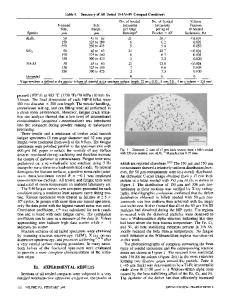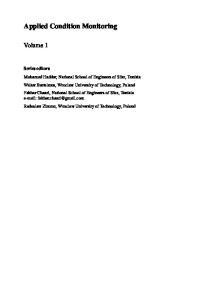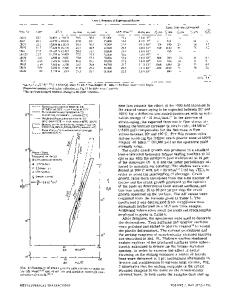Fatigue crack growth rate of Ti-6Al-4V prealloyed powder compacts
- PDF / 1,894,562 Bytes
- 5 Pages / 603.28 x 788 pts Page_size
- 32 Downloads / 313 Views
(b)
(c)
Fig. 2--Selected area electron channeling patterns generated from selected grains in Ni3AI, typical of those observed in this work: (a) from an intergranular facet on the fracture surface, (b) from a grain within the deformed gauge section of the tensile specimen, on the surface, and (c) from a grain within an undeformed aggregate, different specimen.
1 /~m) revealed light and dark patches on individual facets (Figure 3). These patches reflect spatial variations in the crystallographic orientation of the facets, and suggest that subboundaries comprise the region of material beneath the fracture surface. That the misorientation developed while testing (either before, during, or following crack propagation) and not while processing the material is evident from the absence of subboundaries in the consolidated product.* It is thus concluded that the plastic strain which *Transmission electron microscopy studies, 4 currently underway at Dartmouth, have revealed that the individual grains of the as-consolidated product are remarkably free from substructure.
accompanies the propagation of cracks along grain boundaries is indeed greater than that which occurs throughout the bulk of the aggregate prior to fracture. How much greater cannot be ascertained without detailed information on pattern degradation vs plastic strain. What can be said, however, is that the localized plastic strain appears to be closer to 0.03 or 0.05 than it is to 0.002, based upon a comparison of the patterns obtained from the fracture surface and those obtained from the deformed standards. Concerning the spatial extent of localized flow, all that can be said is that the plastic zone extends over a region
greater in extent than the width of a grain boundary, i.e., over a distance greater than about 1 nm. Otherwise, it would be difficult to understand why the angular resolution and the contrast of the channeling lines from the intergranular facets is so low, given that channeling contrast arises from electron scattering within regions of -~50 nm or more5 in depth. In summary, observations made via the method of selected area electron channeling have revealed that localized flow accompanies the intergranular propagation of cracks in Ni3A1 broken under uniaxial tension at room temperature.
The authors wish to acknowledge the financial support of the Office of Basic Energy Sciences of the United States Department of Energy, Contract DE-AC02 81ER 10907. REFERENCES 1. A.R. Cox and E. C. van Reuth: Metals Tech., June 1980, p. 238. 2. E.M. Schulson: J. Mater. Sci., 1977, vol. 12, p. 1071. 3. D. L. Davidson: J. Phys. E., 1976, vol. 9, p. 341. 4. I. Baker: unpublished results, January 1983. 5. J. P. Spencer and C. J. Humphreys: Phil. Mag., 1980, vol. 42, p. 433.
Fatigue Crack Growth Rate of Ti-6AI-4V Prealloyed Powder Compacts S.W. SCHWENKER, A. W. SOMMER, D. EYLON, and E H. FROES In recent years, prealloyed powder metallurgy (PM) has become a viable method for production of titanium alloy components used in demanding aerospace applications. 1-5
Data Loading...











